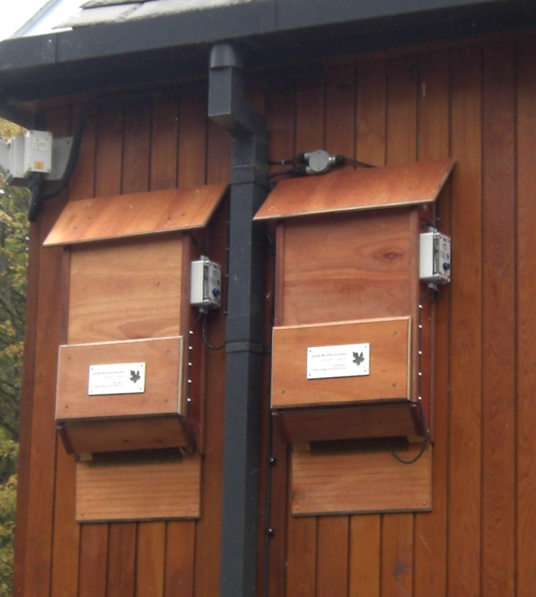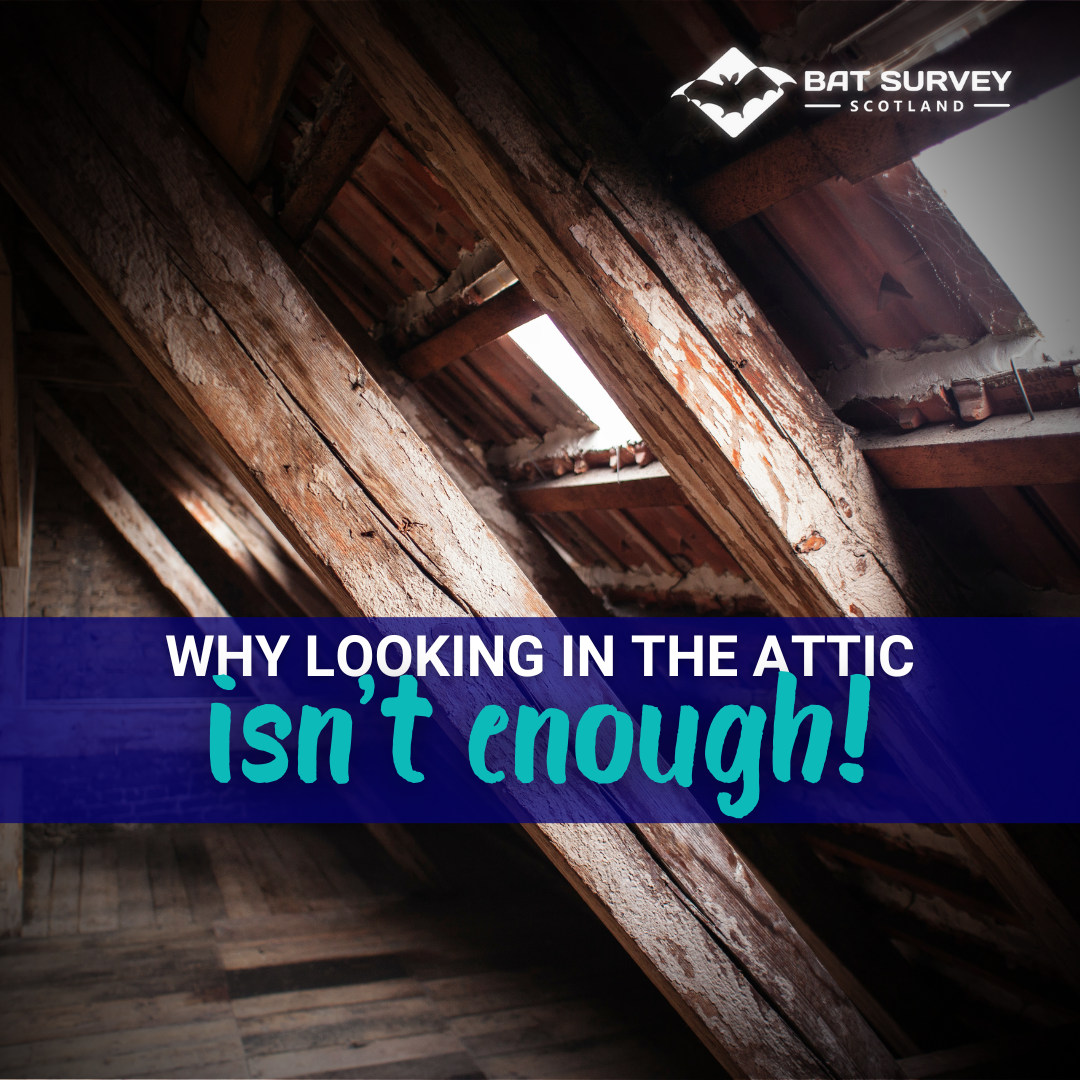All About Bat Boxes
Where development or building works will result in a bat roost being destroyed (under licence - it’s illegal to disturb or destroy a bat roost without a licence) we can create artificial bat roosts as an alternative for the bats. By creating these compensatory roosting opportunities, we ensure your development complies with the law and local bat populations are able to carry on living as they would normally.
One of the ways we create a compensatory roost is by using bat boxes, but not all bat boxes are the same…
Summary of the Law
Bats in Scotland are all legally protected, as are their roosts (even if the roost is unoccupied). It is illegal to block, damage, or destroy a bat roost (including accidental damage), and the law sets out very specific requirements for obtaining a licence to block or destroy a roost as part of a development or building project.
Where development needs to alter or remove a bat roost, you will need to work with an ecologist who will create a Bat Protection Plan including how and where compensatory roosts will be provided. The goal is to keep local bat populations safe and stable and satisfy the legal requirements for your project to go ahead.
If you would like our help with surveying and licensing for your project, you can contact our team of specialist ecologists here.
As part of your licence application we will specify the type and number of bat boxes required to maintain suitable roosting opportunities for any displaced bats, and we will help find solutions that suit your plans and your site. They will usually be one of the following…
Wooden Bat Boxes
These are simple, traditional bat boxes made from untreated wood - quite like a standard bird box but with a different style of entrace.
A woodcrete bat box.
These are not used as compensatory roosts as they don’t last long in wet Scottish weather. They can work nicely as a starting point, with many people opting to place some up in their garden. Wooden bat boxes provide less insulation than alternative types, so temperatures inside can fluctuate. Nonetheless, a basic wooden box can still attract bats like pipistrelles. Just remember to check that droppings can fall out (for low maintenance) and that the wood is untreated and rough-textured for bats to cling onto!
Woodcrete Bat Boxes
These boxes are made of a mix of wood fibres and concrete (or similar materials) and as a result they are heavier, more durable, and offer better insulation than wood alone. They can stay in place for decades with little upkeep, and have higher occupancy rates than wooden bat boxes.
A popular example is the Schwegler range of bat boxes (like the Schwegler 2FN or 1FF models), which come ready-made. These typically have rough interiors and stable temperatures, ideal for roosting bats. Woodcrete boxes can be mounted on trees or buildings as part of a development’s bat mitigation plan. They are a bit more expensive, but their longevity and success rate make them our first stop for creating compensatory roosts.
Integrated Bat Boxes
Integrated bat boxes are specially designed roost chambers that can be built into the walls of new buildings or extensions. From the outside they look like a ventilation brick or panel, so can be very discrete visually. Inside, they provide a hollow space where bats can roost.
Integrated bat boxes have several big advantages:
They are secure and permanent,
They require virtually no maintenance, and
They offer good thermal stability inside.
There are several ‘off the shelf’ integrated bat boxes available, but we often work with architects and building professionals to create bespoke integrated roosts that use existing features.
A crevice or roost entrance can be created by a roofer to look subtle but provide easy, secure access to roosts.
This is a property from the south of England, where the existing roost had a lintel added to protect the entrance and the roost was sealed off from the rest of the property to keep residents and bats separate.
Bat Houses & Loft Spaces
Occasionally, a bat box isn’t enough. For a large or particularly significant roost will be lost, mitigation may require a like-for-like replacement. In practice, this could mean:
A bat house created where there was no suitable ‘in house’ option for providing an alternative roost.
Building a standalone bat house - essentially a shed or small structure optimised for the bats being displaced,
Reserving loft space in a new building just for bats, or
Ensuring a new roof has a dedicated ‘bat loft’ area.
In each of these cases, the structures will need to include features to mimic the roost being replaced including entry points, internal roosting crevices, and insulation to match original conditions. While a group of small bat boxes will work for a couple of displaced individuals, a big maternity colony needs a more comprehensive solution.
This level of mitigation is less common, and if required on your site we will work with you and your architect to find the most pragmatic solution for all involved. We have created bat houses over bin rooms, garages, and other out-buildings, so you can keep your project on track, in keeping with your vision, and meet your legal requirements.
Using Bat Boxes in Mitigation Plans
Heated bat boxes can provide the conditions needed for a displaced maternity roost.
You do not need to design a mitigation plan yourself - that is what we are here to help with!
When we develop your mitigation plan, we will assess the number and type of bat boxes required for the bat roosts found on your property. This is based on:
Which bat species are present,
How many bats are present, and
What kind of roosts are present (e.g. maternity and hibernation roosts have different needs from a solo male’s summer roost)
For example, if a small crevice roost of soprano pipistrelles is affected, the mitigation might be to install a cluster of small crevice-style bat boxes on nearby trees or buildings. If a larger roost of maternity bats (mothers and pups) is being lost, the plan might call for an integrated bat loft or multiple bat boxes that together offer enough space and the right conditions for a breeding colony - this could even mean using heated bat boxes if the new site won’t be as warm.
How Well Do Bat Boxes Work?
Bats can take time to discover and use new roosts, and the efficacy of a mitigation plan can be increased by:
Offering multiple roost options - we usually install multiple options in a group at different heights or orientations to give bats a choice of conditions. Bat boxes are also more likely to be used the more boxes are installed, so by giving options you make each individual bat box more likely to be occupied.
Careful placement and timing - bat boxes should be in place before the original roost is disturbed and situated in similar surroundings. We will consider the orientation, location of treelines and other features, and existing roost conditions when recommending placement of artificial roosts.
Using bat boxes as just part of the mitigation toolkit - sometimes the bets solution is to retain part of the original roost (if possible) or to enhance habitat around a site in addition to installing bat boxes.
In many development scenarios, completely avoiding roost impact isn’t feasible. That’s why we have a range of mitigation options to help you look after the bats as you complete your project. Bats don’t mean the end of a project, and we will always work with you to find a pragmatic, cost-effective way through!
If you need a bat survey (or think you might) get in touch with our team of specialist ecologists!
Or read more of our latest blogs:









